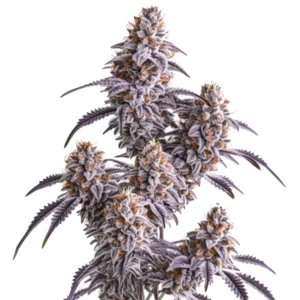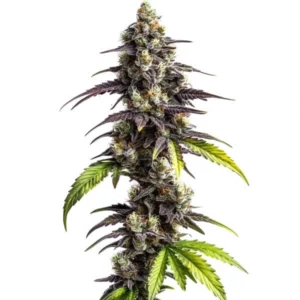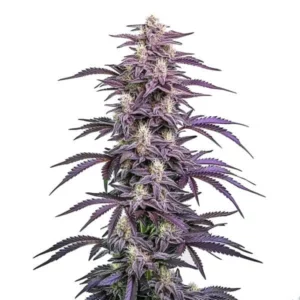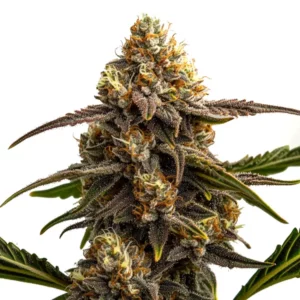Haze Strains
Elevate your cannabis experience with Haze Strains now. The Best Strains of Family Haze, Cannabis plant with High THC, High Yield, Feminized, Autoflowering, Fast Version and CBD Seeds.
Showing 1–16 of 208 resultsSorted by popularity
What Are Haze Strains?
Haze strains are primarily known for their sativa-dominant properties, characterized by a cerebral high that stimulates creativity and energy. Unlike their indica counterparts, which are typically associated with physical relaxation, Haze varieties offer a buzzing, heady experience that can enhance alertness and energy.
Origin of Haze Strains
The origin of Haze strains can be traced back to the 1960s and 1970s in California’s Santa Cruz area, where passionate breeders experimented with crossing different sativa strains from around the world. The result was a line of new hybrids that exhibited vigorous growth patterns, powerful aromas, and a significantly longer flowering period than most other strains of the time.
Characteristics of Haze Cannabis
Haze strains are distinguished by their long, thin leaves, a taller-than-average stature, and light green buds that are often covered in a shimmering coat of trichomes. Aromatically, Haze strains are known for a sharp, spicy scent mixed with a sweet citrus undertone, which is almost as energizing as their effects.
Haze Strains Overview
Haze varieties are celebrated for their complex genetic makeup and have spawned numerous popular sub-strains in the cannabis market. Here, we explore these elements in more detail.
The Genetic Makeup of Haze Varieties
The genetic base of Haze includes genetics from landrace strains such as Thai, Mexican, Colombian, and Indian sativas, giving it a rich and diverse genetic heritage that is responsible for its unique effects and flavors.
Popular Haze Strains in the Market
Some of the most renowned Haze strains include Super Silver Haze, Amnesia Haze, and Lemon Haze, each offering users a slightly different variation on the classic Haze high.
How Haze Strains Differ from Other Cannabis Families
Haze strains stand out from other cannabis families due to their longer flowering times, often requiring as much as 12 weeks to mature fully, as well as their more pronounced cerebral effects which are much less common in the more sedative indica varieties.
Cultivation of Haze Strains
Cultivating Haze strains is an endeavor that requires not only basic gardening skills but also a deep understanding of the unique characteristics and needs of these particular cannabis varieties. Given their sativa-dominant genetics, Haze strains pose several unique challenges but also offer rewarding yields and potent products when grown successfully. Here’s a deeper dive into the nuances of cultivating Haze cannabis strains.
Ideal Growing Conditions for Haze Strains
Haze strains originate from equatorial regions, and as such, they thrive in environments that offer a long growing season with plenty of sunshine and warmth. When cultivating Haze strains, it’s crucial to mimic these conditions as closely as possible to achieve optimal growth and potency.
-
Lighting: Haze strains require an abundance of light. In an indoor setting, this typically means utilizing high-intensity discharge lamps such as HPS (High Pressure Sodium) or LED (Light Emitting Diode) lighting systems to simulate the strong sunlight they would naturally receive.
-
Temperature: Consistent temperatures between 70°F (21°C) and 85°F (29°C) are ideal. Temperatures should not drop significantly at night, as large fluctuations can stress the plants and affect their development.
-
Humidity: These strains also benefit from moderate to high humidity levels, particularly during the vegetative stage. A humidity level of 40-60% is recommended, with lower humidity during the flowering stage to prevent mold and fungal diseases.
-
Ventilation: Good air circulation is essential to keep humidity in check and to strengthen stem growth. Fans can be used in indoor setups to help mimic the gentle breeze they might experience outdoors.
Challenges in Cultivating Haze Strains
Growing Haze strains comes with a unique set of challenges that can test the patience and skill of even the most experienced growers.
-
Height Control: Due to their sativa heritage, Haze strains often grow tall and lanky. In confined indoor spaces, this can become a problem. Techniques such as topping (cutting off the top of the plant early in its vegetative state) and employing the Screen of Green (SCROG) method are effective in managing plant height and encouraging more lateral growth.
-
Longer Flowering Times: Haze strains are notorious for their lengthy flowering periods, often extending up to 12 weeks or more. This extended flowering time requires a prolonged commitment to maintaining optimal conditions without errors, as mistakes can be more cumulative and damaging over a longer period.
-
Nutrient Requirements: These plants generally require higher levels of nutrients compared to indica strains, particularly nitrogen in the vegetative stage and phosphorus and potassium during flowering. However, care must be taken to avoid nutrient burn, characterized by the tips of the leaves turning brown and crispy.
Tips for Successful Cultivation
To successfully cultivate Haze strains and enjoy their full potential, consider the following tips:
-
Start with Quality Genetics: Obtain high-quality seeds or clones from reputable sources. This ensures the plant has the best chance of thriving and reduces the likelihood of poor growth traits.
-
Regular Pruning: Due to their vigorous growth, Haze plants can benefit significantly from regular pruning. This not only helps manage their size but also improves light penetration and air flow around the lower parts of the plant, which can help increase overall yields.
-
Monitoring and Adjustments: Constant monitoring is crucial, especially due to the long flowering period. Adjustments in nutrients, lighting, and watering should be made promptly based on the plant’s appearance and growth patterns.
-
Patience is Key: Perhaps the most important tip when growing Haze strains is to be patient. The long growing cycle can be a test of endurance and commitment, but the reward of high-quality, potent buds makes it worthwhile.
By understanding and catering to the specific needs of Haze strains, cultivators can overcome the challenges associated with these plants and achieve successful harvests that are both rewarding and enriching.
Effects and Benefits of Haze Strains
The effects and medical benefits of Haze strains are as diverse as their genetics.
Psychoactive Effects
Haze strains are celebrated for their uplifting and energizing effects, making them ideal for use during the day. They can enhance creativity, boost energy, and even help with focus, making them popular among artists, musicians, and professionals alike.
Medical Benefits of Haze Strains
Medically, Haze strains are often sought after for their ability to combat fatigue, alleviate depression, and stimulate appetite. They can also be beneficial in treating some symptoms of anxiety due to their uplifting effects.
Recreational Use of Haze
On the recreational side, Haze strains are favored for their vibrant, uplifting experience that encourages social interaction and physical activity, contrasting with the couch-lock effects associated with many indica strains.
Haze Strains and Cannabis Culture
The impact of Haze strains on cannabis culture is significant, influencing both the development of new strains and the way cannabis is enjoyed socially.
Haze strains have been pivotal in shaping the global conversation about cannabis, particularly in terms of appreciation for sativa effects and the pursuit of breeding for specific traits like aroma and potency.
As legal markets expand, the demand for diverse and high-quality cannabis experiences is likely to increase, positioning Haze strains well within the market due to their established popularity and unique effects.
How to Choose the Right Haze Strain
Selecting the right Haze strain can enhance your experience, whether for medical or recreational purposes.
Factors to Consider When Selecting a Strain
When choosing a Haze strain, consider factors like the specific effects desired, tolerance levels, and the presence of particular terpenes that may influence flavor and effects.
Recommendations for Beginners
Beginners may want to start with a Haze strain that has a moderate THC level, such as Blue Dream Haze, which offers a balanced effect suitable for those new to cannabis or sensitive to strong psychoactive effects.
Haze Strains FAQ
What Are the Most Potent Haze Strains?
Super Silver Haze and Ghost Train Haze are among the most potent, known for their strong cerebral effects.
How Do Haze Strains Affect Mental Clarity?
While Haze strains are primarily energizing and can enhance focus, the high THC content in some varieties might overwhelm beginners, causing a temporary fog rather than enhanced clarity.
Can Haze Strains Be Used for Edibles?
Yes, Haze strains can be used to make edibles. However, their distinct flavor profile should be considered when choosing recipes, as the strong, spicy-citrus notes might dominate other flavors.
















